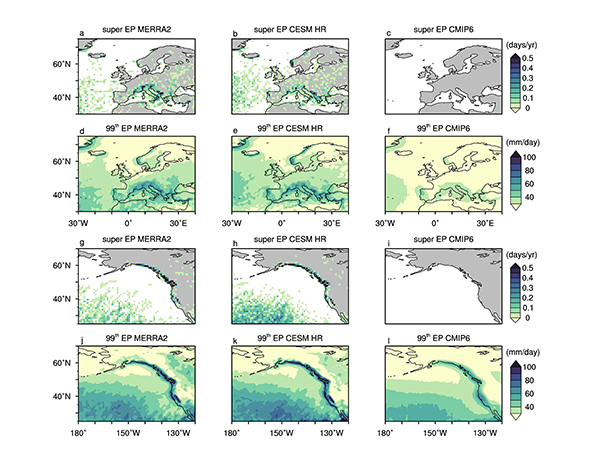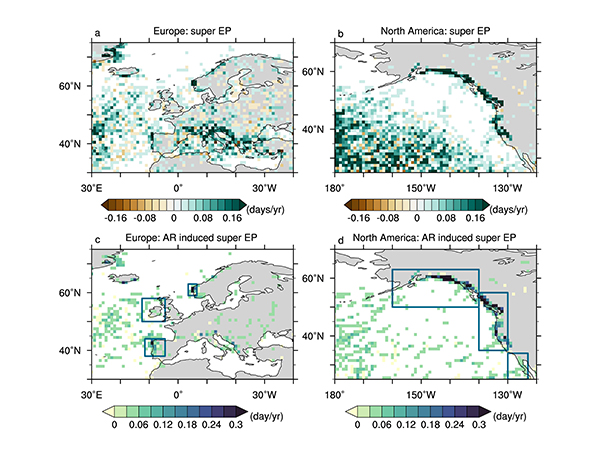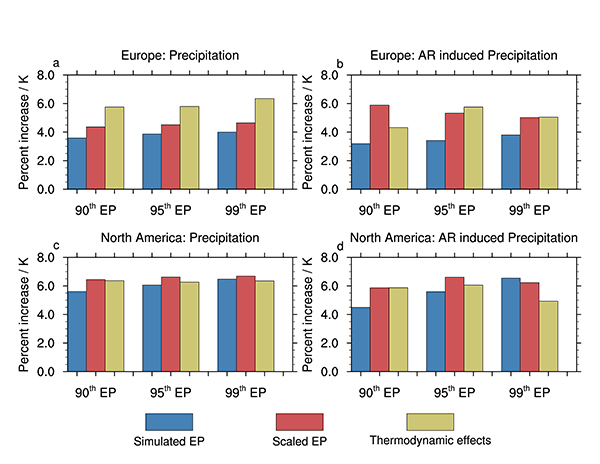OUC’s research team led by Professor Gao Huiwang and Professor Zhang Shaoqing from Frontiers Science Center for Deep Ocean Multispheres and Earth System has made innovative breakthroughs in the field of atmospheric river-induced heavy precipitation research, based on the nearly one-thousand-year simulation data of the high-resolution Earth system model. By using the high-resolution model, the team has significantly improved the simulation of extreme precipitation events caused by atmospheric rivers, and revealed the influencing mechanism of extreme precipitation events triggered by atmospheric rivers from the perspectives of thermodynamics and dynamics. The research findings, titled “More High-impact Atmospheric River-Induced Extreme Precipitation Events Under Warming in a High-Resolution Model”, were published online in the world-renowned journal One Earth.
The team’s previous studies (Gao et al., 2015, doi: 10.1002/2015GL065435; Gao et al., 2016, doi:10.1175/JCLI-D-16-0088.1) indicated that the intensity of atmospheric rivers simulated by the low-resolution CMIP5 model is relatively low, with the landing positions of the simulated atmospheric rivers deviating towards the equator. This study applied a high-resolution Earth system model (with an atmospheric resolution of 25 kilometers and an ocean resolution of 10 kilometers, CESM-HR). By enhancing the ability to capture the atmospheric water content and the position of the westerly jet, the above-mentioned deviations were corrected. Furthermore, the team explored the evolution characteristics of the frequency and intensity of atmospheric rivers along the west coast in the Northern Hemisphere, as well as the intensity of heavy precipitation triggered by atmospheric rivers. The research findings show that the high-resolution model has significantly improved the simulation of the intensity of atmospheric rivers and the intensity of heavy precipitation triggered by atmospheric rivers during the historical period (1975 - 2004), highlighting the major contributions of atmospheric rivers to heavy precipitation events on the west coasts of the continents in the Northern Hemisphere. The research further points out that if the large-scale consumption of fossil fuels continues and greenhouse gas emissions keep rising, the frequency and spatial extent of super extreme precipitation events triggered by atmospheric rivers will rise substantially by the end of this century, especially in the coastal areas of Europe and North America.



